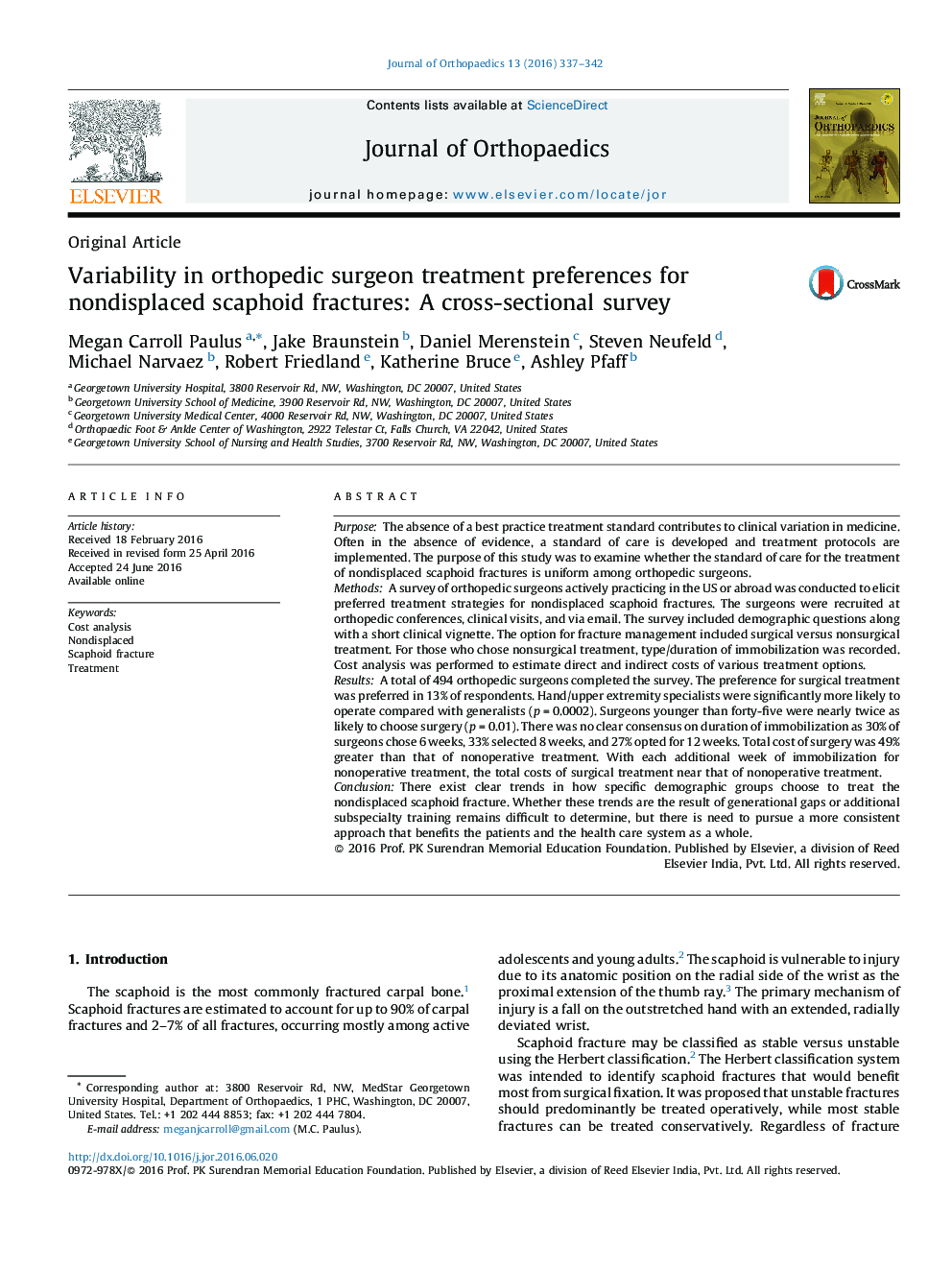| Article ID | Journal | Published Year | Pages | File Type |
|---|---|---|---|---|
| 3251659 | Journal of Orthopaedics | 2016 | 6 Pages |
PurposeThe absence of a best practice treatment standard contributes to clinical variation in medicine. Often in the absence of evidence, a standard of care is developed and treatment protocols are implemented. The purpose of this study was to examine whether the standard of care for the treatment of nondisplaced scaphoid fractures is uniform among orthopedic surgeons.MethodsA survey of orthopedic surgeons actively practicing in the US or abroad was conducted to elicit preferred treatment strategies for nondisplaced scaphoid fractures. The surgeons were recruited at orthopedic conferences, clinical visits, and via email. The survey included demographic questions along with a short clinical vignette. The option for fracture management included surgical versus nonsurgical treatment. For those who chose nonsurgical treatment, type/duration of immobilization was recorded. Cost analysis was performed to estimate direct and indirect costs of various treatment options.ResultsA total of 494 orthopedic surgeons completed the survey. The preference for surgical treatment was preferred in 13% of respondents. Hand/upper extremity specialists were significantly more likely to operate compared with generalists (p = 0.0002). Surgeons younger than forty-five were nearly twice as likely to choose surgery (p = 0.01). There was no clear consensus on duration of immobilization as 30% of surgeons chose 6 weeks, 33% selected 8 weeks, and 27% opted for 12 weeks. Total cost of surgery was 49% greater than that of nonoperative treatment. With each additional week of immobilization for nonoperative treatment, the total costs of surgical treatment near that of nonoperative treatment.ConclusionThere exist clear trends in how specific demographic groups choose to treat the nondisplaced scaphoid fracture. Whether these trends are the result of generational gaps or additional subspecialty training remains difficult to determine, but there is need to pursue a more consistent approach that benefits the patients and the health care system as a whole.
